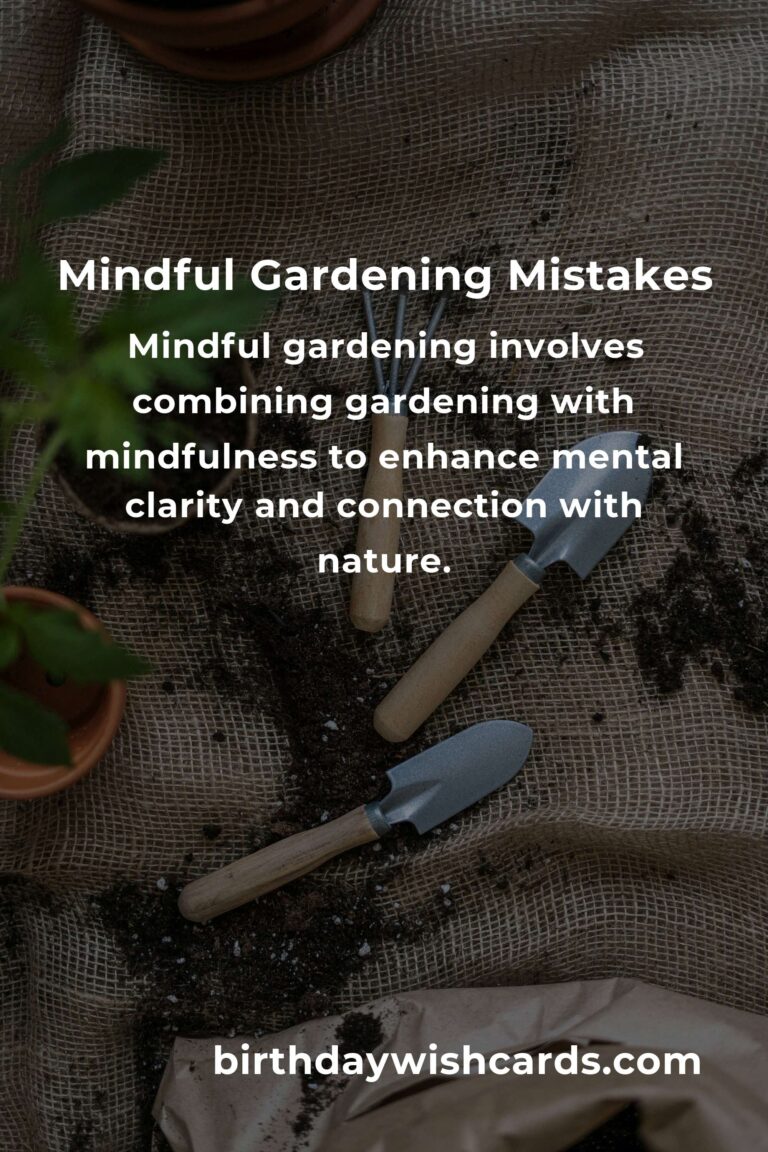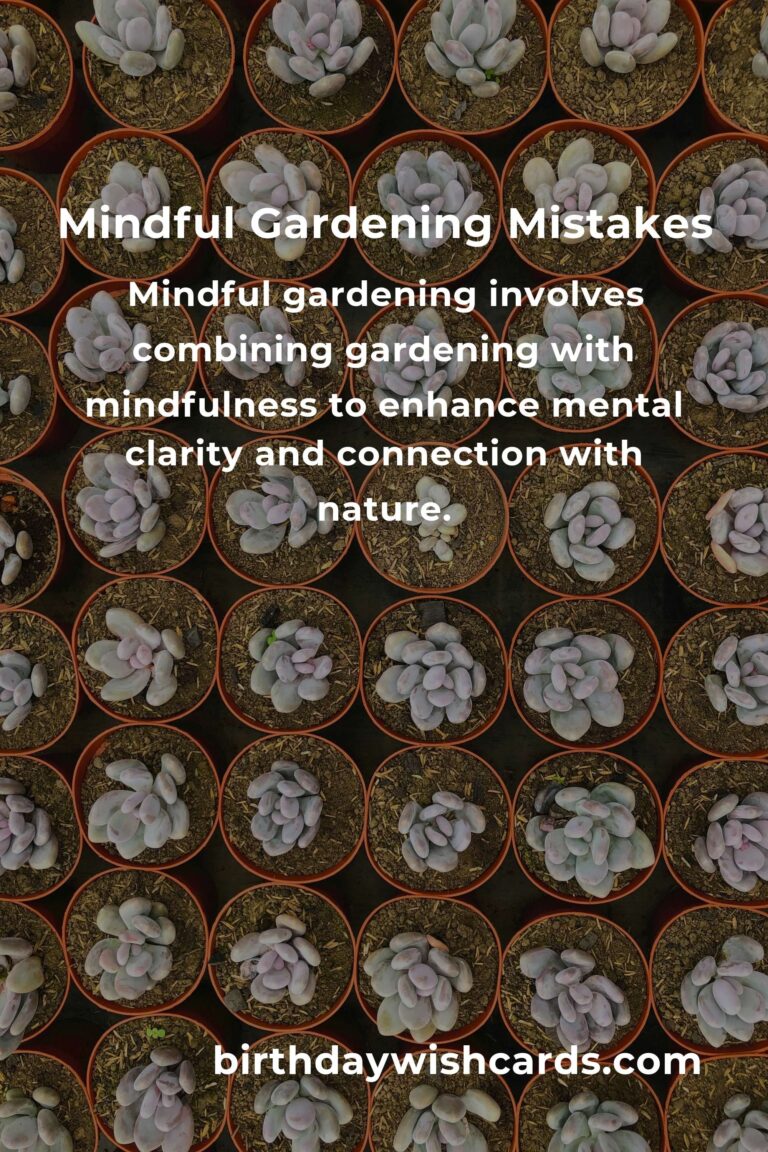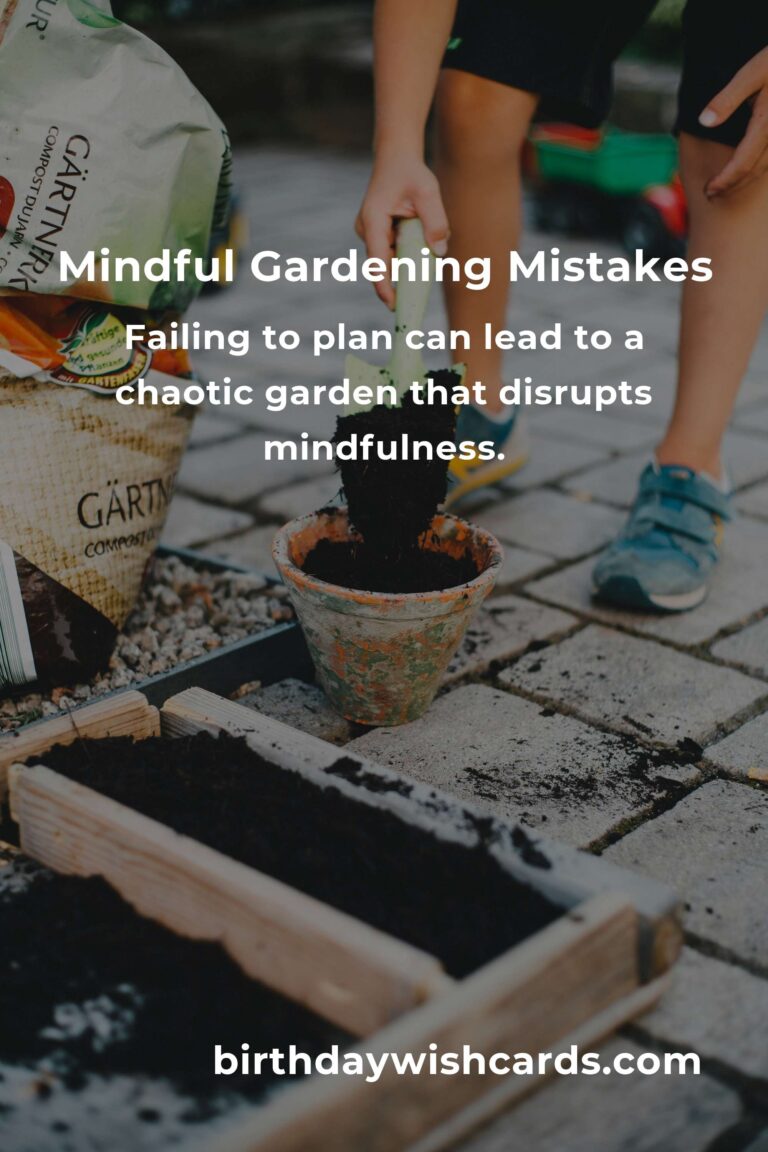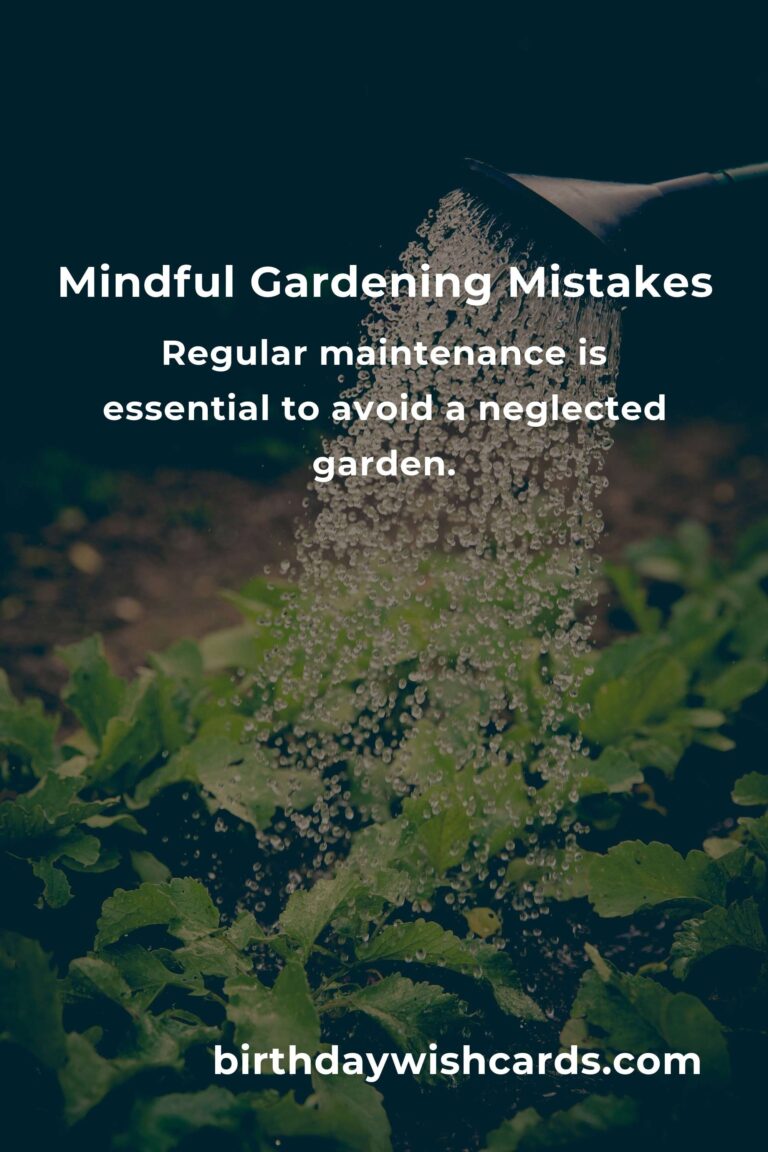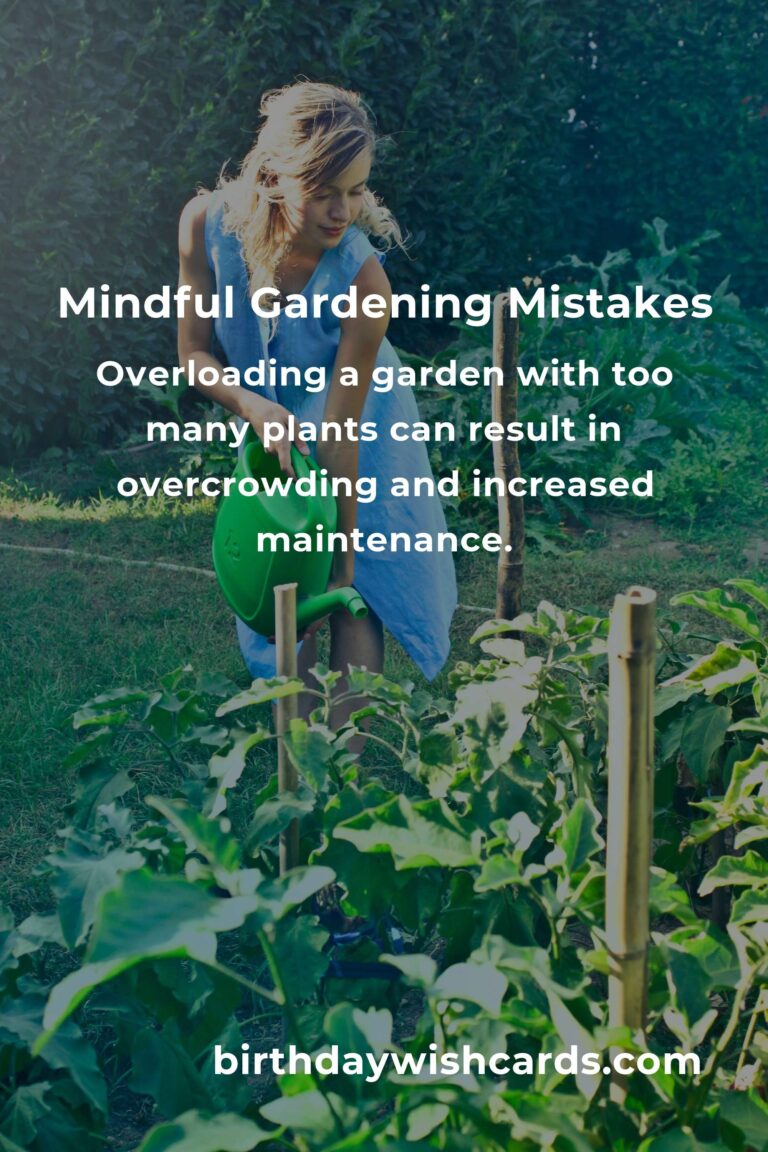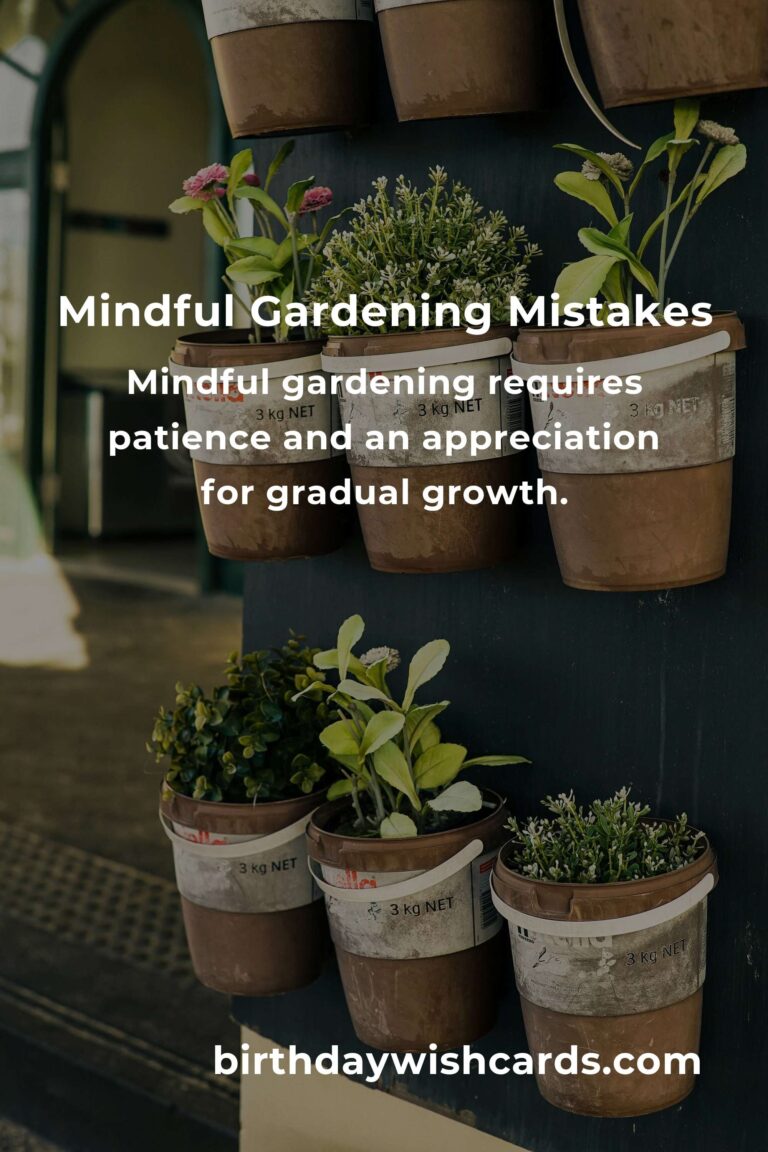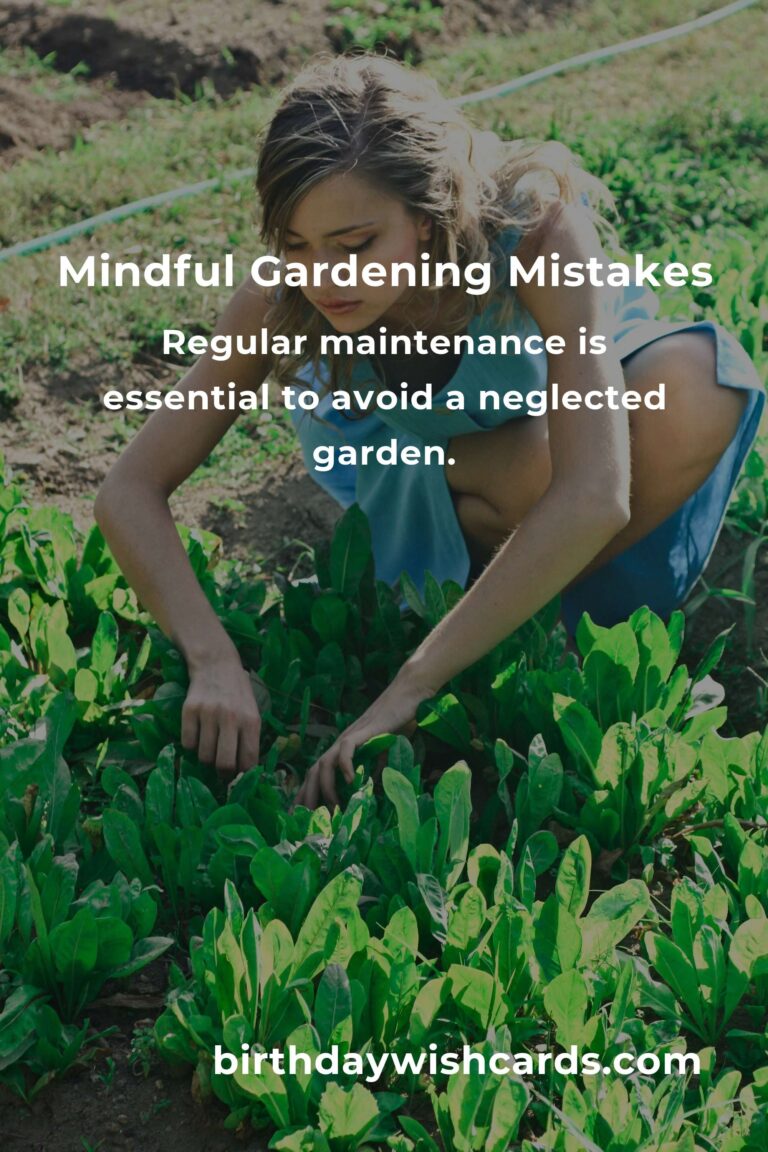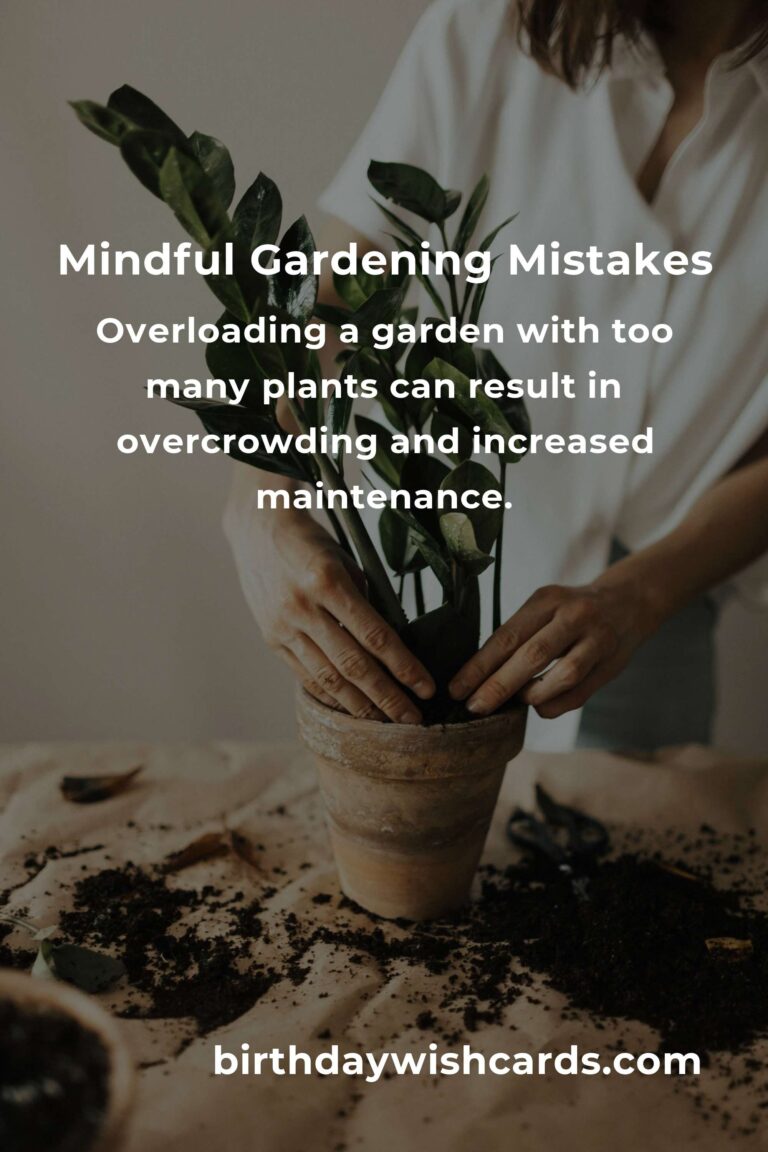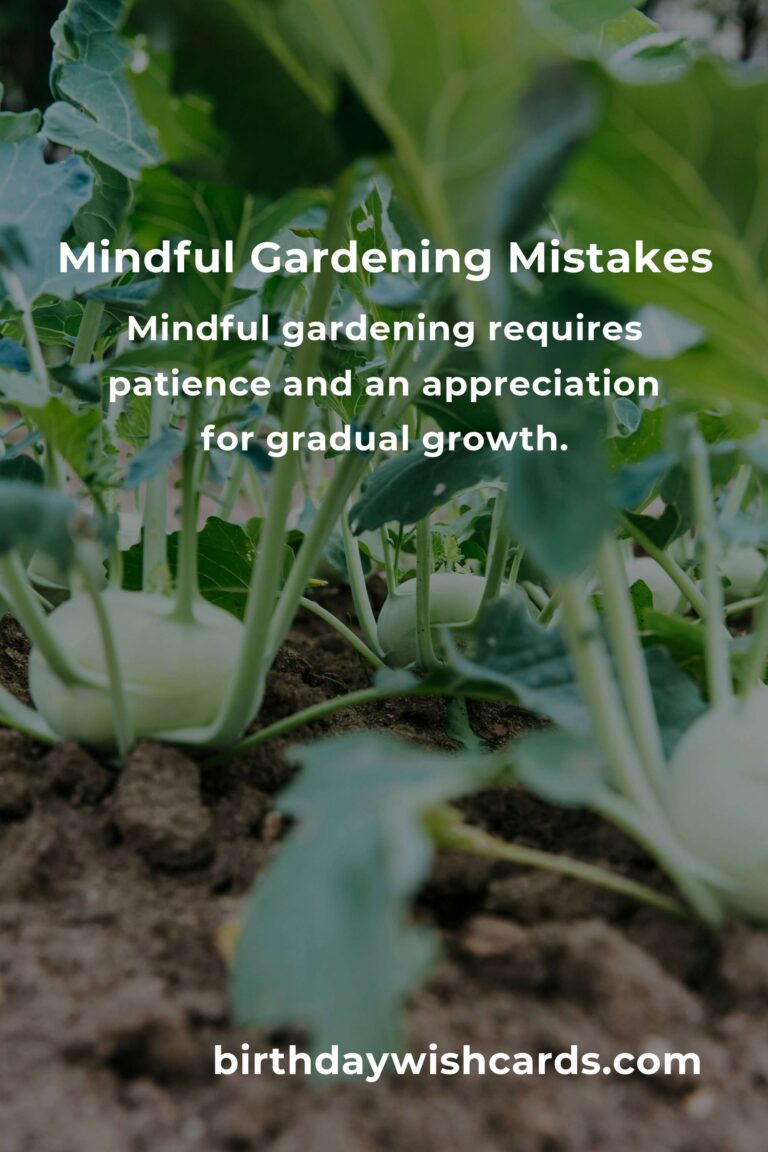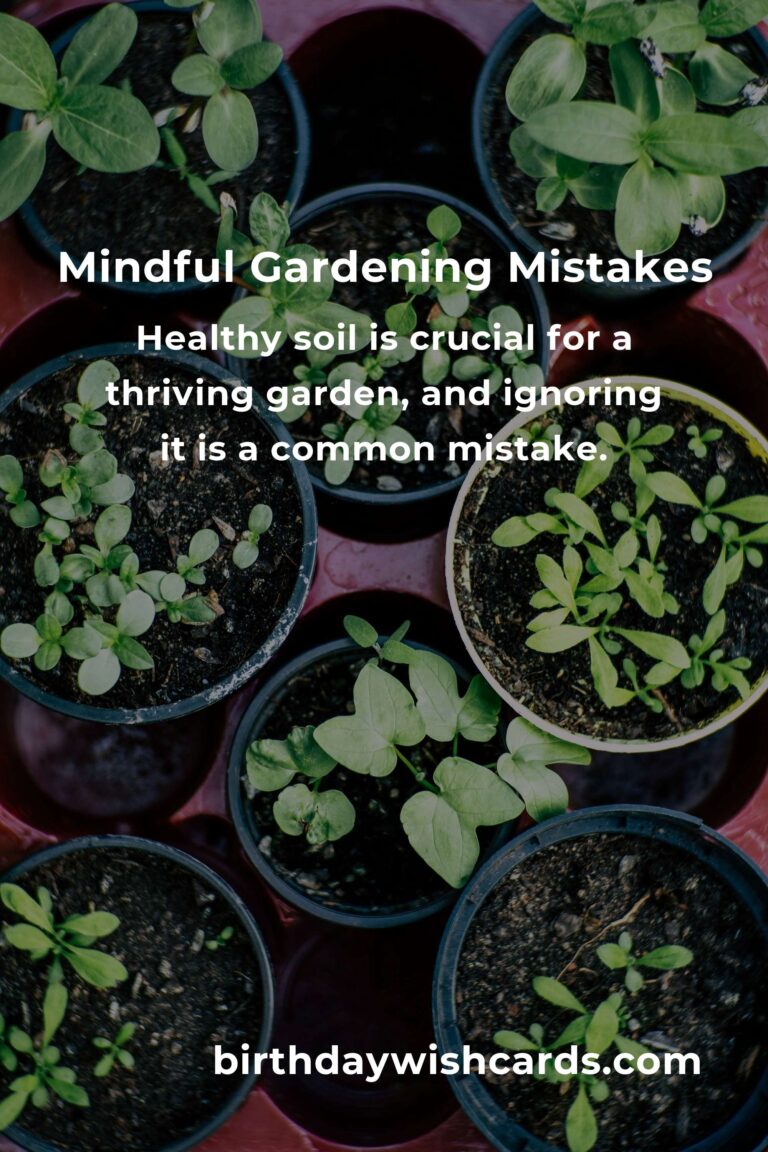
Mindful gardening is a rewarding practice that combines the benefits of gardening with the principles of mindfulness. It can reduce stress, improve mental clarity, and foster a deeper connection with nature. However, even the most experienced gardeners can make mistakes that disrupt the tranquility and effectiveness of their gardening efforts. In this article, we will explore common mistakes in mindful gardening and provide tips on how to avoid them.
1. Neglecting to Plan
One of the most common mistakes in gardening, mindful or not, is failing to plan. Without a clear plan, your garden can quickly become chaotic, making it harder to practice mindfulness. Start by sketching out a simple layout of your garden space, considering the sunlight, soil type, and the plants you want to grow. This planning phase allows you to set clear intentions for your gardening practice.
2. Overloading with Too Many Plants
It’s easy to get carried away with the excitement of planting. However, overloading your garden with too many plants can lead to overcrowding, competition for resources, and increased maintenance. Mindful gardening encourages simplicity. Focus on a few plants that you can care for attentively, and allow space for them to thrive.
3. Ignoring Soil Health
Healthy soil is the foundation of a thriving garden. Ignoring soil health is a common mistake that can lead to poor plant growth and increased susceptibility to pests and diseases. Practice mindfulness by taking time to observe and understand your soil. Regularly add organic matter such as compost to improve soil structure and fertility.
4. Skipping Regular Maintenance
Gardening requires regular maintenance, such as watering, weeding, and pruning. Skipping these tasks can lead to a neglected garden that is difficult to manage. Incorporate maintenance into your routine mindfully by using it as an opportunity to connect with your plants and observe any changes or issues that arise.
5. Becoming Impatient
Gardening is an exercise in patience, and mindful gardening is no different. Plants take time to grow, and it can be frustrating if results are not immediate. Practice patience by focusing on the process rather than the outcome. Enjoy each stage of growth and learn to appreciate the gradual progress of your garden.
6. Not Observing Nature’s Cues
Nature offers cues that can guide your gardening practice. Ignoring these cues is a common mistake. For instance, plants will show signs if they are receiving too much or too little water or sunlight. Being mindful involves paying attention to these signs and adjusting your care accordingly.
Conclusion
Mindful gardening is a beautiful practice that offers numerous benefits. By avoiding these common mistakes and incorporating mindfulness into your gardening routine, you can create a peaceful, thriving garden that enriches your life. Remember to plan, maintain soil health, and embrace patience as you cultivate your mindful garden.
Mindful gardening involves combining gardening with mindfulness to enhance mental clarity and connection with nature. Failing to plan can lead to a chaotic garden that disrupts mindfulness. Overloading a garden with too many plants can result in overcrowding and increased maintenance. Healthy soil is crucial for a thriving garden, and ignoring it is a common mistake. Regular maintenance is essential to avoid a neglected garden. Mindful gardening requires patience and an appreciation for gradual growth. Observing nature’s cues can guide your gardening practice effectively.
#MindfulGardening #GardeningTips #GardenMistakes #Mindfulness #PlantCare


